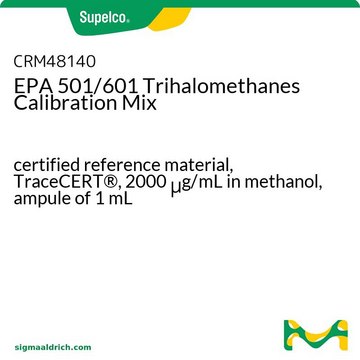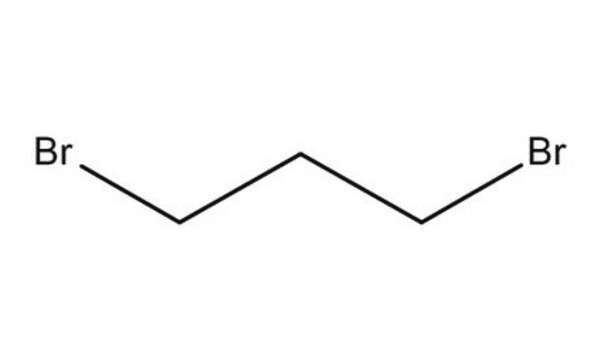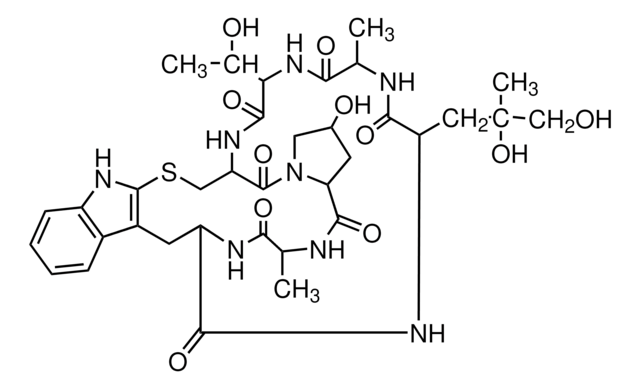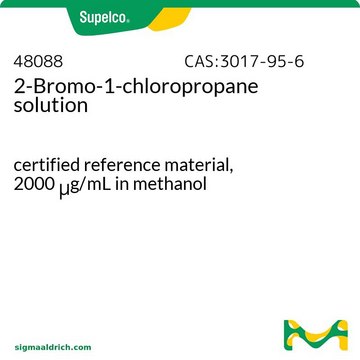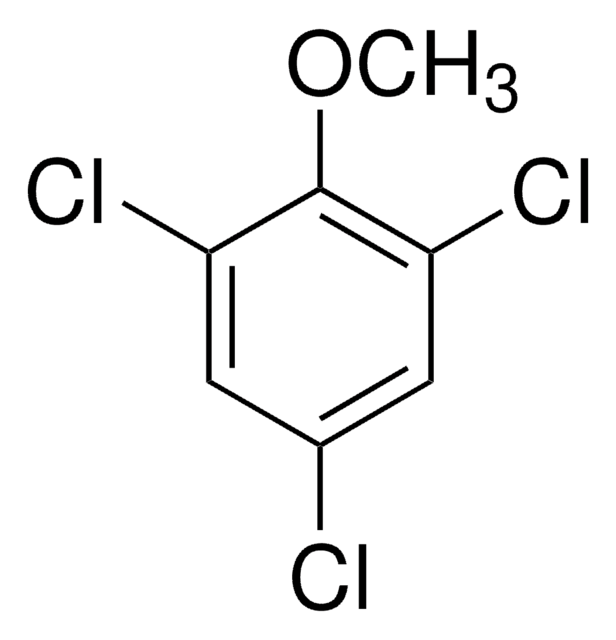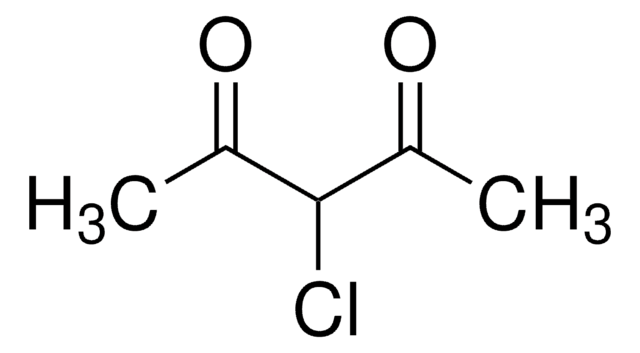140961
1,2-Dibromopropane
97%
Sinónimos:
Propylene dibromide
About This Item
Productos recomendados
Nivel de calidad
Ensayo
97%
Formulario
liquid
índice de refracción
n20/D 1.519 (lit.)
bp
140-142 °C (lit.)
mp
−55 °C (lit.)
solubilidad
organic solvents: miscible
water: slightly soluble
densidad
1.937 g/mL at 25 °C (lit.)
cadena SMILES
CC(Br)CBr
InChI
1S/C3H6Br2/c1-3(5)2-4/h3H,2H2,1H3
Clave InChI
XFNJYAKDBJUJAJ-UHFFFAOYSA-N
¿Está buscando productos similares? Visita Guía de comparación de productos
Categorías relacionadas
Aplicación
Acciones bioquímicas o fisiológicas
Palabra de señalización
Warning
Frases de peligro
Clasificaciones de peligro
Acute Tox. 4 Inhalation - Acute Tox. 4 Oral - Aquatic Chronic 2 - Eye Irrit. 2 - Flam. Liq. 3 - Skin Irrit. 2
Código de clase de almacenamiento
3 - Flammable liquids
Clase de riesgo para el agua (WGK)
WGK 3
Punto de inflamabilidad (°F)
122.0 °F - closed cup
Punto de inflamabilidad (°C)
50 °C - closed cup
Equipo de protección personal
Eyeshields, Faceshields, Gloves, type ABEK (EN14387) respirator filter
Elija entre una de las versiones más recientes:
¿Ya tiene este producto?
Encuentre la documentación para los productos que ha comprado recientemente en la Biblioteca de documentos.
Los clientes también vieron
Global Trade Item Number
| Número de referencia del producto (SKU) | GTIN |
|---|---|
| 140961-5G | |
| 140961-100G | 4061838733801 |
| 140961-500G |
Nuestro equipo de científicos tiene experiencia en todas las áreas de investigación: Ciencias de la vida, Ciencia de los materiales, Síntesis química, Cromatografía, Analítica y muchas otras.
Póngase en contacto con el Servicio técnico
